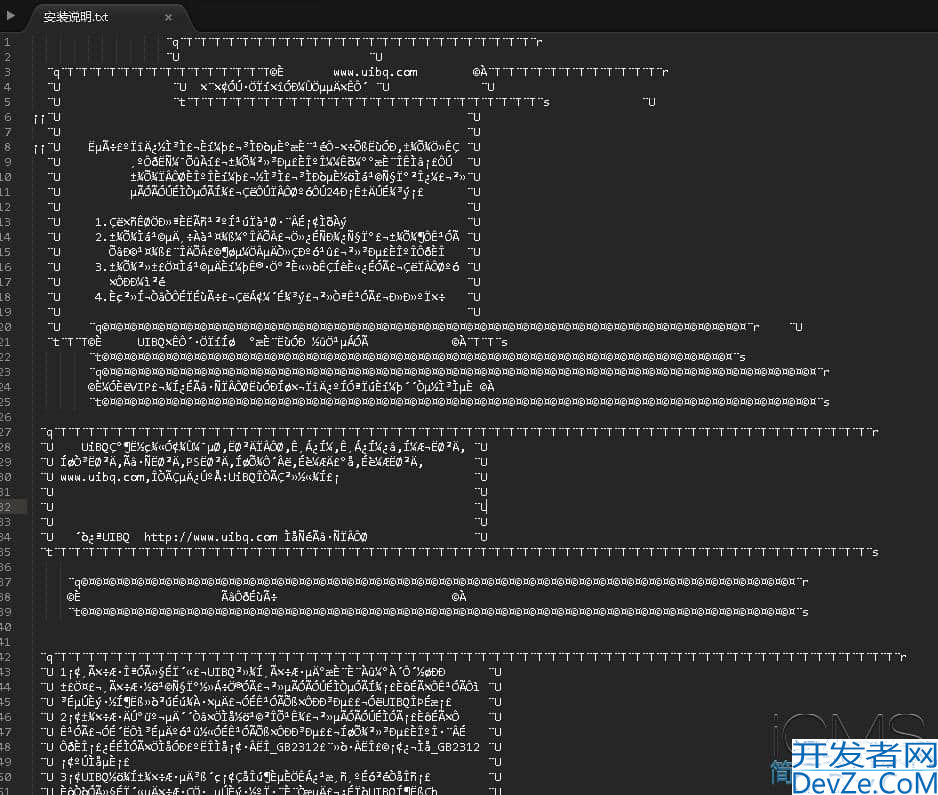Python参数配置使用XML文件的教程
目录
- 1. 为什么选择 XML 配置文件
- 2. 使用 XML 配置文件存储参数
- 3. 解析 XML 文件并提取配置参数
- 4. 保存结果到 XML 文件
- 5. 完整示例代码
当配置项存储在外部文件(如 XML、jsON)时,修改配置无需重新编译和发布代码。通过更新 XML 文件即可调整参数,无需更改源代码,从而提升开发效率和代码可维护性。
1. 为什么选择 XML 配置文件
XML 配置文件具有多种优点,如良好的扩展性、可读性和兼容性等。然而,最重要的优势在于其简洁和优雅的结构。
在使用 python 编写机器学习算法或其他算法时,99%的情况需要调用库并使用他人封装的代码。这过程中常常涉及文件路径、参数配置等问题。当算法开发到一定程度(基本不需要修改大的结构后),此时引入 XML 配置文件来管理输入输出文件及相关参数,不仅方便参数的调整,还简化了模型的打包过程。
以我自己的一个代码项目为例,使用 RANS编程AC 和 ICP 进行点云配准。在引入 XML 配置文件之前,代码如下:
if __name__ == "__main__":
# 设置距离阈值
voxel_size = 5
distance_threshold = 4
print(f"Using voxel size: {voxel_size}")
print(f"Using distance threshold: {distance_threshold}")
# 加载模型
pcd_mri = load_and_convert_to_point_cloud("mri1.stl", num_points=8000)
pcd_scan xyIZIRB= preprocess_point_cloud(load_and_convert_to_point_cloud("scan2.stl", num_points=10000), voxel_size)
pcd_helmet = load_and_convert_to_point_cloud("helmet2.stl", num_points=6000)
...
虽然将需要修改的路径和参数集中在代码前部是一种良好的习惯,便于自己维护和调参,但对于他人来说,代码后部分仍然存在许多需要调整的参数:
# 使用RANSAC进行 mri -> scan 粗配准
result_ransac_mri_to_scan = o3d.pipelines.registration.registration_ransac_based_on_feature_matching(
pcd_mri_down, pcd_scan_down, fpfh_mri, fpfh_scan, True,
distance_threshold,
o3d.pipelines.registration.TransformationEstimationPointToPoint(False),
3,
[o3d.pipelines.registration.CorrespondenceCheckerBasedOnEdgeLength(0.8),
o3d.pipelines.registration.CorrespondenceCheckerBasedOnDistance(distance_threxyIZIRBshold)],
o3d.pipelines.registration.RANSACConvergenceCriteria(4000000, 500)
)
# 使用RANSAC进行 helmet -> scan 粗配准
result_ransac_helmet_to_scan = o3d.pipelines.registration.registration_ransac_based_on_feature_matching(
pcd_helmet_xyIZIRBdown, pcd_scan_down, fpfh_helmet, fpfh_scan, True,
distance_threshold,
o3d.pipelines.registration.TransformationEstimationPointToPoint(False),
3,
[o3d.pipelines.registration.CorrespondenceCheckerBasedOnEdgeLength(0.8),
o3d.pipelines.registration.CorrespondenceCheckerBasedOnDistance(distance_threshold)],
o3d.pipelines.registration.RANSACConvergenceCriteria(4000000, 500)
)
这些参数通常已经调试好,且不需要频繁修改,但其他开发者可能不清楚这些参数的具体含义和设置。因此,使用 XML 配置文件来规范化参数设置,是一种有效的解决方案。
2. 使用 XML 配置文件存储参数
通过一个 XML 配置文件来存储配准相关的参数,可以显著提升代码的可维护性和灵活性。以下是一个示例配置文件:
<?xml version="1.0" encoding="UTF-8"?>
<config>
<Preprocessing>
<VoxelSize>5.0</VoxelSize>
</Preprocessing>
<Alignment>
<DistanceThreshold>4.0</DistanceThreshold>
</Alignment>
<ModelFiles>
<MRI>mri_model.stl</MRI>
<Scan>scan_model.stl</Scan>
</ModelFiles>
<NumPoints>
<MRI>8000</MRI>
<Scan>10000</Scan>
</NumPoints>
</config>
3. 解析 XML 文件并提取配置参数
使用 Python 的 xml.etree.ElementTree 库,可以轻松解析 XML 文件并提取所需的配置参数。以下是示例代码:
import xml.etree.ElementTree as ET
# 从 XML 文件中加载参数
def load_parameters_from_xml(xml_file):
tree = ET.parse(xml_file)
root = tree.getroot()
params = {
'voxel_size': float(root.find('Preprocessing/VoxelSize').text),
'distance_threshold': float(root.find('Alignment/DistanceThreshold').text),
'model_files': {
'mri': root.find('ModelFiles/MRI').text,
'scan': root.find('ModelFiles/Scan').text,
},
'num_points': {
'mri': int(root.find('NumPoints/MRI').text),
'scan': int(root.find('NumPoints/Scan').text),
}
}
return params
这样一来,代码不仅更加简洁优雅,还方便了他人的使用和维护。
4. 保存结果到 XML 文件
同样地,输出结果也可以通过 XML 文件进行保存。只要是可以 print 出来的内容,都可以使用 XML 来存储。这一方法的好处在于,若你的算法需要被集成到某个框架中,其他人也可以轻松通过读取 XML 文件来实现输入输出接口。
def save_results_to_xml(file_name, voxel_size, distance_threshold, ransac_results, icp_results):
root = ET.Element("Results")
# 添加基本参数
parameters = ET.SubElement(root, "Parameters")
ET.SubElement(parameters, "VoxelSize").text = str(voxel_size)
ET.SubElement(parameters, "DistanceThreshold").text = str(distance_threshold)
# 添加 RANSAC 和 ICP 结果
# 省略具体的添加过程,最后美化 XML 并写入文件
with open(file_name, "w", encoding="utf-8") as f:
f.write(pretty_xml)
5. 完整示例代码
以下是最终的完整示例代码,展示了如何使用 XML 配置文件来管理参数,并进行点云配准:
if __name__ == "__main__":
try:
编程 import os
import sys
BASE_DIR = os.path.dirname(os.path.realpath(sys.argv[0]))
xml_file_path = os.path.join(BASE_DIR, 'AlignPoint_input.xml')
params = load_parameters_from_xml(xml_file_path)
voxel_size = params['voxel_size']
distance_threshold = params['distance_threshold']
# 加载和预处理点云
mri_file_path = os.path.join(BASE_DIR, params['model_files']['mri'])
scan_file_path = os.path.join(BASE_DIR, params['model_files']['scan'])
pcd_mri = load_and_convert_to_point_cloud(mri_file_path, params['num_points']['mri'])
pcd_scan = preprocess_point_cloud(
load_and_convert_to_point_cloud(scan_file_path, params['num_points']['scan']), voxel_size)
# 计算 FPFH 特征和下采样点云
pcd_mri_down, fpfh_mri = compute_fpfh_features(pcd_mri, voxel_size)
pcd_scan_down, fpfh_scan = compute_fpfh_features(pcd_scan, voxel_size)
# 执行 RANSAC 和 ICP 配准
# ...
# 保存结果到 XML 文件
save_results_to_xml("AlignPoint_output.xml", voxel_size, distance_threshold, ransac_results, icp_results)
# 可视化对齐结果
visualize_alignment(pcd_mri, pcd_scan, result_icp_mri_to_scan.transformation)
except Exception as e:
print("An error occurred:", e)
with open("error_log.txt", "w") as f:
f.write(str(e))
到此这篇关于Python参数配置使用XML文件的教程的文章就介绍到这了,更多相关Python参数配置使用XML 内容请搜索编程客栈(www.devze.com)以前的文章或继续浏览下面的相关文章希望大家以后多多支持编程客栈(www.devze.com)!







 加载中,请稍侯......
加载中,请稍侯......
精彩评论